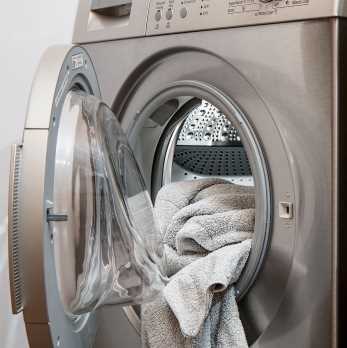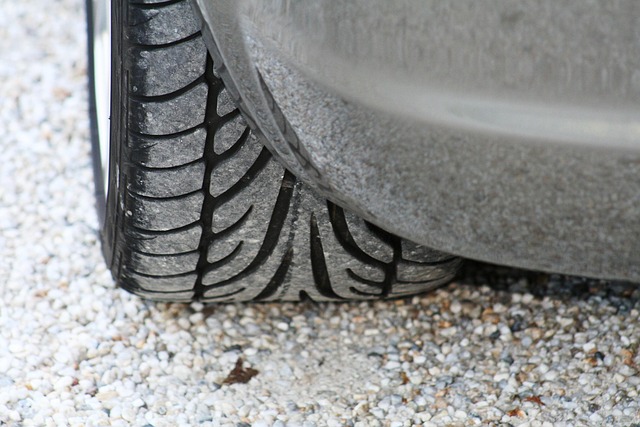Choosing the Right Washing Machine: Features, Efficiency, and Smart Technology Explained
Modern washing machines combine efficiency, convenience, and advanced technology to simplify laundry day. Whether you're looking for a top-loading, front-loading, or compact model, understanding key features—such as load capacity, energy efficiency, and smart connectivity—can help you make the best choice. This guide explores different washing machine types, highlights the benefits of eco-friendly and high-performance models, and provides tips for optimal maintenance. Discover how the right washer can save time, reduce water usage, and keep clothes looking their best.

What are the main types of washing machines available?
When shopping for a washing machine, you’ll primarily encounter two main types: front-load and top-load washers. Front-load washers are known for their superior cleaning performance and energy efficiency. They use less water and detergent while providing a gentler wash cycle, making them ideal for delicate fabrics. However, they typically come with a higher price tag and may require bending to load and unload.
Top-load washers, on the other hand, are generally more affordable and easier to access. They come in two subtypes: agitator and impeller models. Agitator top-loaders use a central spindle to move clothes through the water, while impeller models use a low-profile cone or disc to create currents that clean clothes more gently and efficiently.
How do energy-saving washing machines benefit users?
Energy-saving washing machines offer numerous advantages for both the environment and your wallet. These models are designed to use less water and electricity without compromising cleaning performance. Many energy-efficient washers feature advanced sensors that detect load size and soil level, adjusting water usage and cycle time accordingly.
Look for machines with an ENERGY STAR certification, which indicates they meet strict energy efficiency guidelines set by the U.S. Environmental Protection Agency and the Department of Energy. These washers typically use about 25% less energy and 33% less water than standard models, leading to significant savings on utility bills over time.
What smart laundry features are available in modern washers?
Smart technology has made its way into laundry rooms, offering convenience and enhanced control over your washing experience. Many modern washers come equipped with Wi-Fi connectivity, allowing you to start, stop, or monitor cycles remotely through smartphone apps. Some advanced features include:
-
Custom cycle creation: Tailor wash cycles to specific fabric types or cleaning needs.
-
Automatic detergent dispensing: The machine dispenses the right amount of detergent based on load size and soil level.
-
Voice control: Integration with smart home assistants for hands-free operation.
-
Troubleshooting alerts: Receive notifications about maintenance needs or potential issues.
-
Load & Go™ systems: Add detergent once and let the machine dispense it for multiple loads.
These smart features can help optimize your laundry routine, save time, and ensure proper care for your clothes.
How can proper washer maintenance extend machine lifespan?
Regular maintenance is crucial for keeping your washing machine in top condition and extending its lifespan. Here are some essential tips:
-
Clean the drum monthly: Run an empty cycle with hot water and a cup of white vinegar or a specialized washing machine cleaner.
-
Leave the door or lid open after use: This prevents mold and mildew growth by allowing the drum to dry completely.
-
Check and clean the filter: Many front-load washers have accessible filters that should be cleaned periodically to prevent clogs.
-
Inspect hoses: Look for signs of wear or leaks in the water supply hoses and replace them every 3-5 years.
-
Use the right detergent: Always use high-efficiency (HE) detergent in HE machines to prevent excess suds and residue buildup.
What factors should you consider when choosing the right capacity?
Selecting the appropriate washer capacity is crucial for efficient cleaning and energy savings. Consider the following factors:
-
Household size: Larger families typically require machines with higher capacities.
-
Laundry frequency: If you prefer doing fewer, larger loads, a bigger capacity might be beneficial.
-
Types of items washed: If you regularly wash bulky items like comforters, a larger capacity is necessary.
-
Space constraints: Ensure the machine fits comfortably in your laundry area.
As a general guide, a 3-4 cubic foot capacity suits 1-2 person households, 4-5 cubic feet works well for 3-4 person families, and 5+ cubic feet is ideal for larger families or those who frequently wash bulky items.
How do washing machine features compare across different models?
When comparing washing machine models, it’s essential to consider various features and their impact on performance, convenience, and cost. Here’s a comparison of some popular washing machine models:
| Model | Type | Capacity | Energy Rating | Smart Features | Estimated Price |
|---|---|---|---|---|---|
| LG WM3900HWA | Front-Load | 4.5 cu. ft. | ENERGY STAR | Wi-Fi, ThinQ App | $999 - $1,199 |
| Samsung WF45R6300AV | Front-Load | 4.5 cu. ft. | ENERGY STAR | Wi-Fi, Bixby | $899 - $1,099 |
| Whirlpool WTW5057LW | Top-Load | 4.3 cu. ft. | Standard | None | $649 - $799 |
| GE GTW720BSNWS | Top-Load | 4.8 cu. ft. | ENERGY STAR | Wi-Fi, SmartHQ App | $799 - $999 |
| Maytag MVW7230HW | Top-Load | 5.2 cu. ft. | ENERGY STAR | None | $899 - $1,099 |
Prices, rates, or cost estimates mentioned in this article are based on the latest available information but may change over time. Independent research is advised before making financial decisions.
Choosing the right washing machine involves carefully considering your household’s needs, budget, and preferences. By understanding the differences between front-load and top-load washers, exploring energy-saving options, and evaluating smart features, you can select a machine that will provide years of efficient and effective laundry care. Remember to factor in capacity requirements and ongoing maintenance to ensure your new washer serves you well for years to come.




